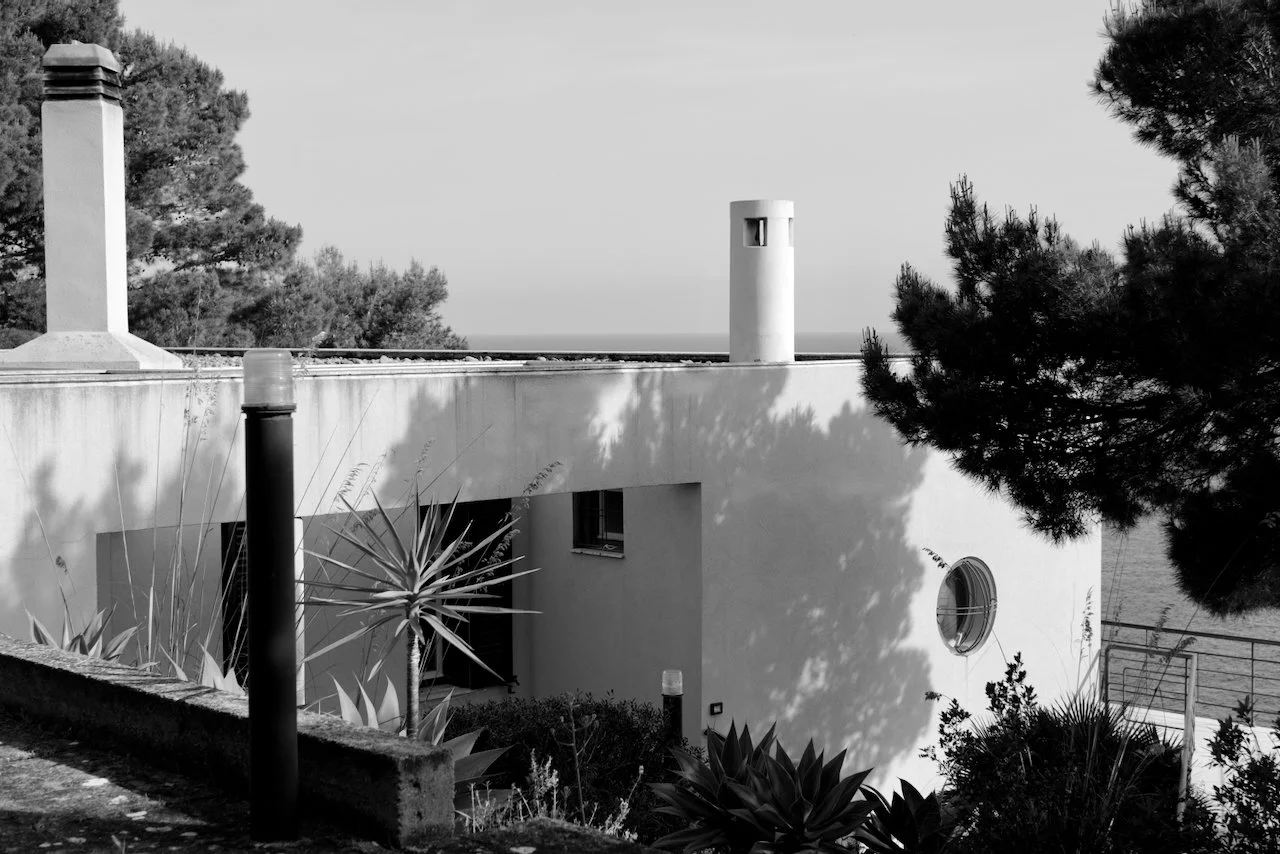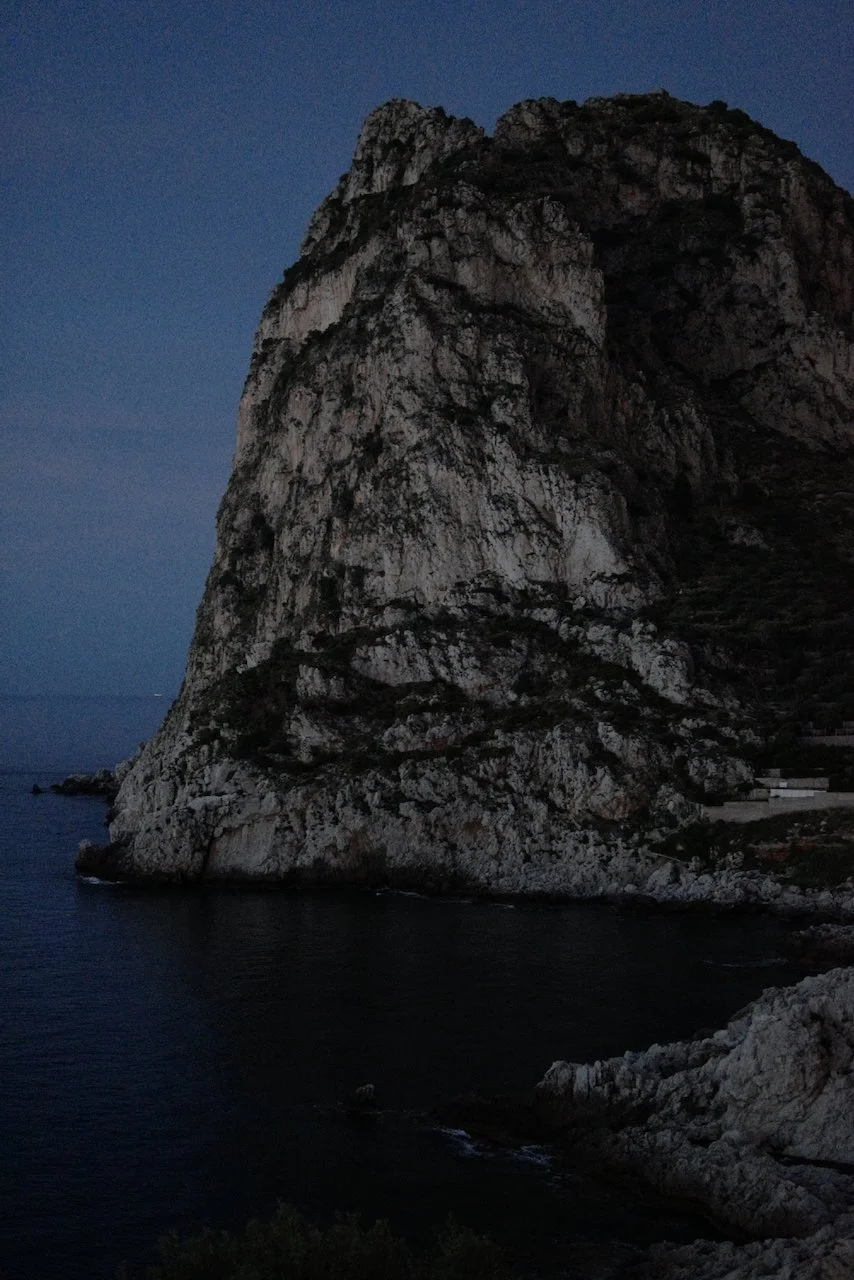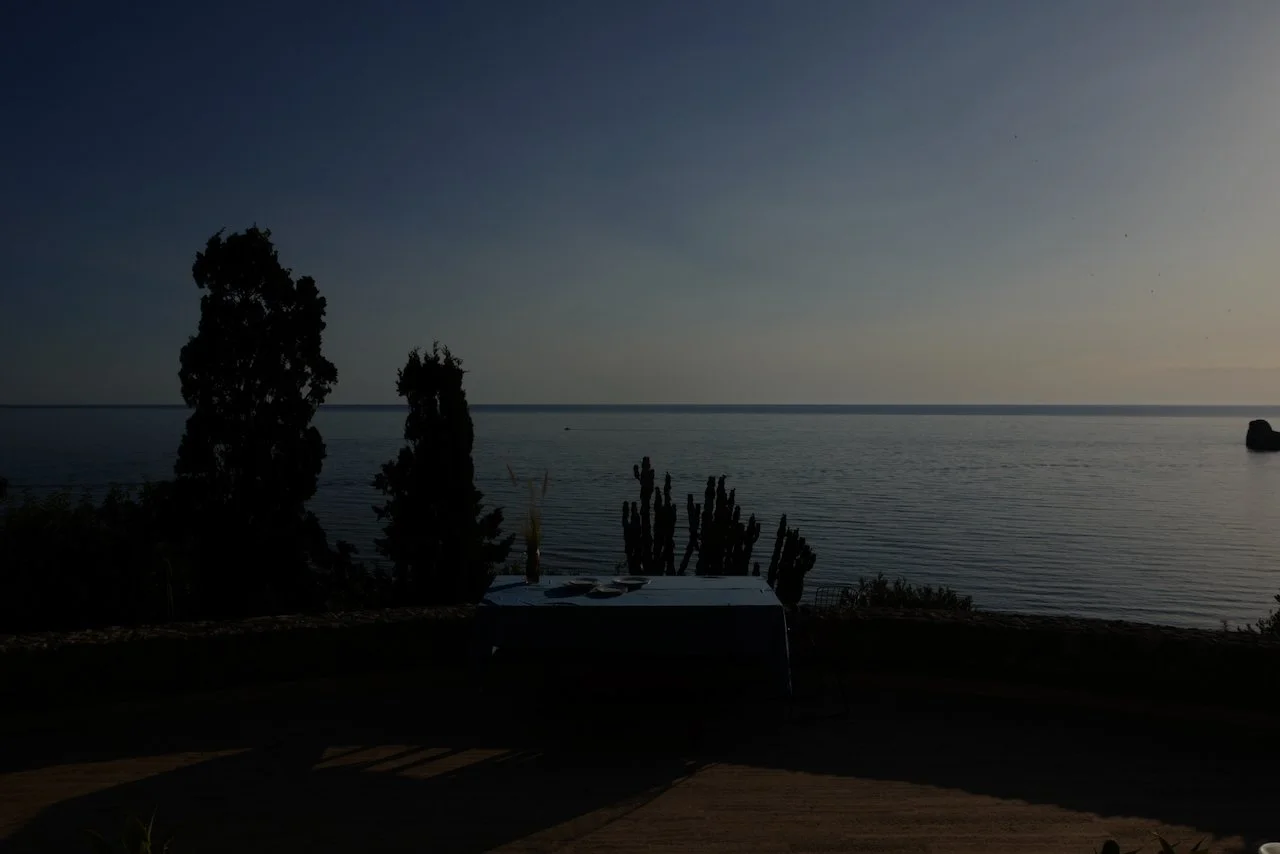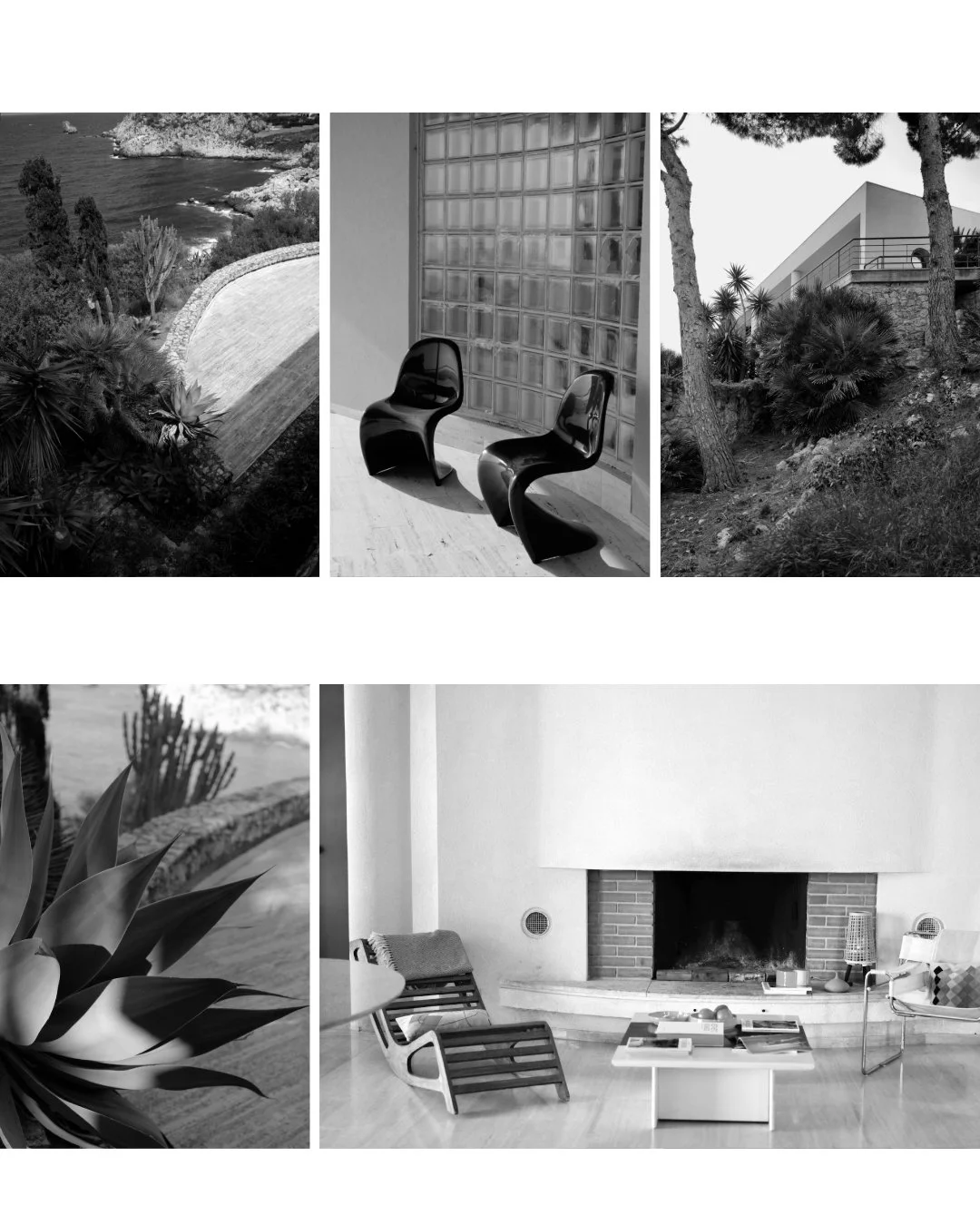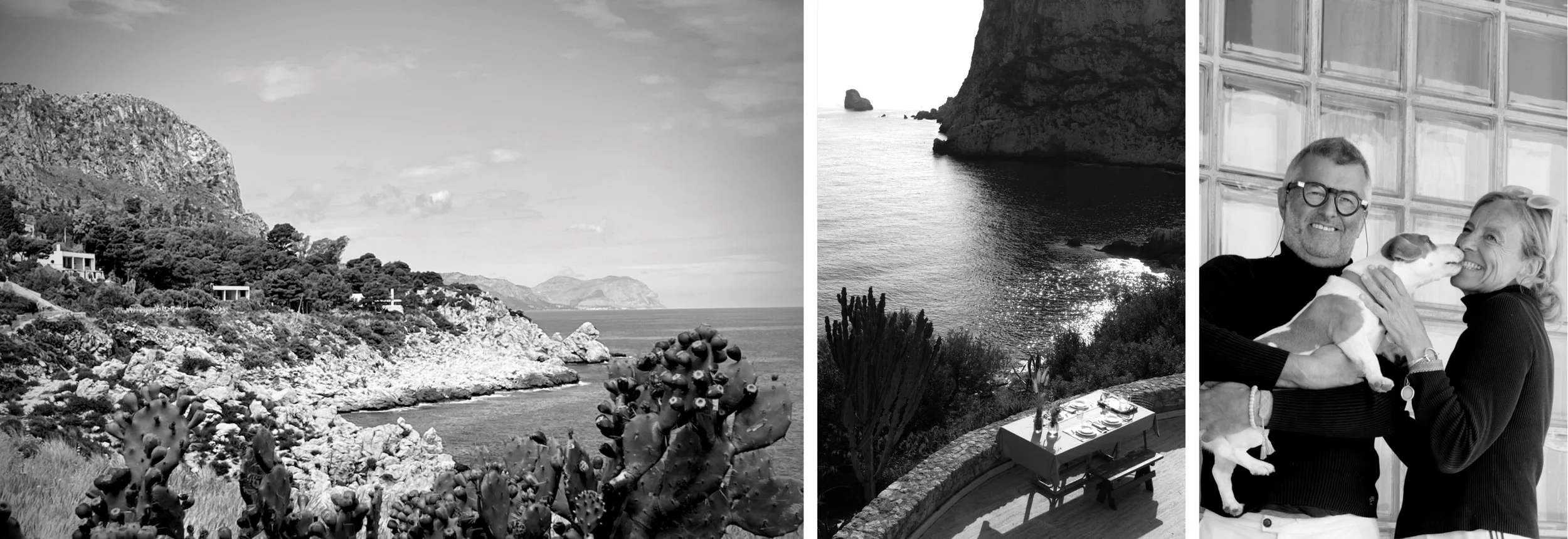Capo Zafferano - Part I, 2025
THE EXQUISITE DAYTIME LUNACY OF A SAFFRON ROCK.
Villa Capo Zafferano—A Brutalist Seaside Villa Near Palermo
I swear I saw her silhouetted in the rock.
She was there as the sun broke through the leaden sky, rare light for the season. A woman saxophone player hunched over her instrument—intimately, the way women seem to coax sound from a saxophone, not force it, hips fluid rather than thrust forward. Long, curly hair veiled her face. Slender, magnetic; a figure born of shadow and sound. An image in grisaille that would fit the sleeve of the '70s psychedelic jazz album that was playing in a forgotten bar, in a forgotten city, on a business trip long ago. Only months later did I find it, buried in the back of a local record shop.
I played the record once. I never saw her image in the rock again. Singularity is beauty’s quirk. Its way of keeping us exploring.
All that remained of her was 227 meters of limestone rising from the Mediterranean: a gatekeeper for the fishermen's villages in its shadow, a safe haven for the seagulls that nestle in its crevices. Capo Zafferano towers over the house we're staying in, protective more than menacing, intruding into every moment that you spend in it.
Armando Barraja didn't design Villa Capo Zafferano to compete with nature. The house is a concrete and travertine block jutting from the limestone, facing sea and sky, an altar in honor of nature. It's one of three similar buildings constructed into the cliffs between Porticello and Aspra, set within an oasis of evergreen shrubs and cacti, beginning to flower just as we arrived. The last waves of a spring storm crash on the rocks 30 meters below in a curtain of white spray, etching the line between azure and indigo waters.
80 steps take you down to the sea. They have been laid in the rough pebble-infused concrete that I scraped my knees on when I was a kid, wearing the bloody crusts that I picked off long before I should have, memories of forgotten falls on a slab that was poured to be sturdy, to last a lifetime, just like the tiny scars they left behind.
The villa blends brutalism and postmodernism in a collection of lines, straight and curved, that juxtapose man-made symmetry against nature's chaos of rocks and flora. Rhythmic iron guardrails line the vast terraces, casting a shadow trellis on the walls in the early morning light. Rough-hewn limestone joins concrete and travertine to form intimate enclosures, behind which guest bedrooms are tucked. Concealed passageways guide circulation, intersecting the gardens with unexpected sea views. The brutal Mediterranean sun plays its game of light and shadow, changing through the day, inviting you to inhabit every part of the house and its terraces.
I’m writing this on Giancarlo Piretti’s green Plana Folding Table, produced by Castelli in the 1970s—Italy’s golden age of design, when plastic furniture was still beautifully innovative. In the corner is Breuer's canvas Wassily armchair. Vintage lamps from the 1960s and 1970s cast a warm, lived-in glow across the living room at night. Many of them are prize-winning designs once reviewed in Ottagono Magazine, a stack of which now sits on the shelves behind the desk.
Barraja is an aesthetic perfectionist: not a single welding seam marks the lengthy handrail that wraps the terraces. The iron grills on the porthole windows protrude like Pugs' eyes. A long, sloping alley runs the width of the property behind the house, seemingly designed for the sheer beauty of its perspective: the villa framed against the sea from an unexpected angle.
He's well into his 80s now and still occupies the house from time to time. He’s no longer descending the stairs to have a swim along the rocky shore. But I'm sure he still notices the fisherman who sputters into view around eight in the morning and cuts the engine in the shade of the rock, in front of the house. He throws a line into the water, fits the oars into the locks, and rows just enough to draw the line taut. As he brings it in, a smaller figure at the stern unhooks the fish, throws some of them back into the water, and tosses the larger ones in the dory. When the line is in, they repeat the process. Soundlessly. Every day until they have their catch.
The light shifts, and the rock changes. Just before sunset, it takes on the color of saffron. The saxophone player never returned. I suppose she was never really there—a figment of my imagination, a mild form of exquisite daytime lunacy, so sought-after.
Travelers. Creators. Architects. We're all just dreamers, aren't we?
Even fishermen, once they have their catch.
Subscribe to get full access to the newsletter and publication archives.
